By Michelle Fish
Late last year, OBIIS finalized the details of our newest Farm-Direct partnership with Maria Esther Saut and Pascual Castillo. They are the proprietors of COFINCAF, which is an aggregator, processor, and exporter of coffee. And they are also coffee growers on their beautiful model farm, Finca La Fortaleza, in Chiapas, Mexico.
Since we first met them in August of 2021, they have become two of our dearest friends and most trusted partners. They have done as much or more to shape how we see the opportunities before us in OBIIS as anyone. And they have inspired us beyond measure with the work that they are engaged in with hundreds of small producers in their region.
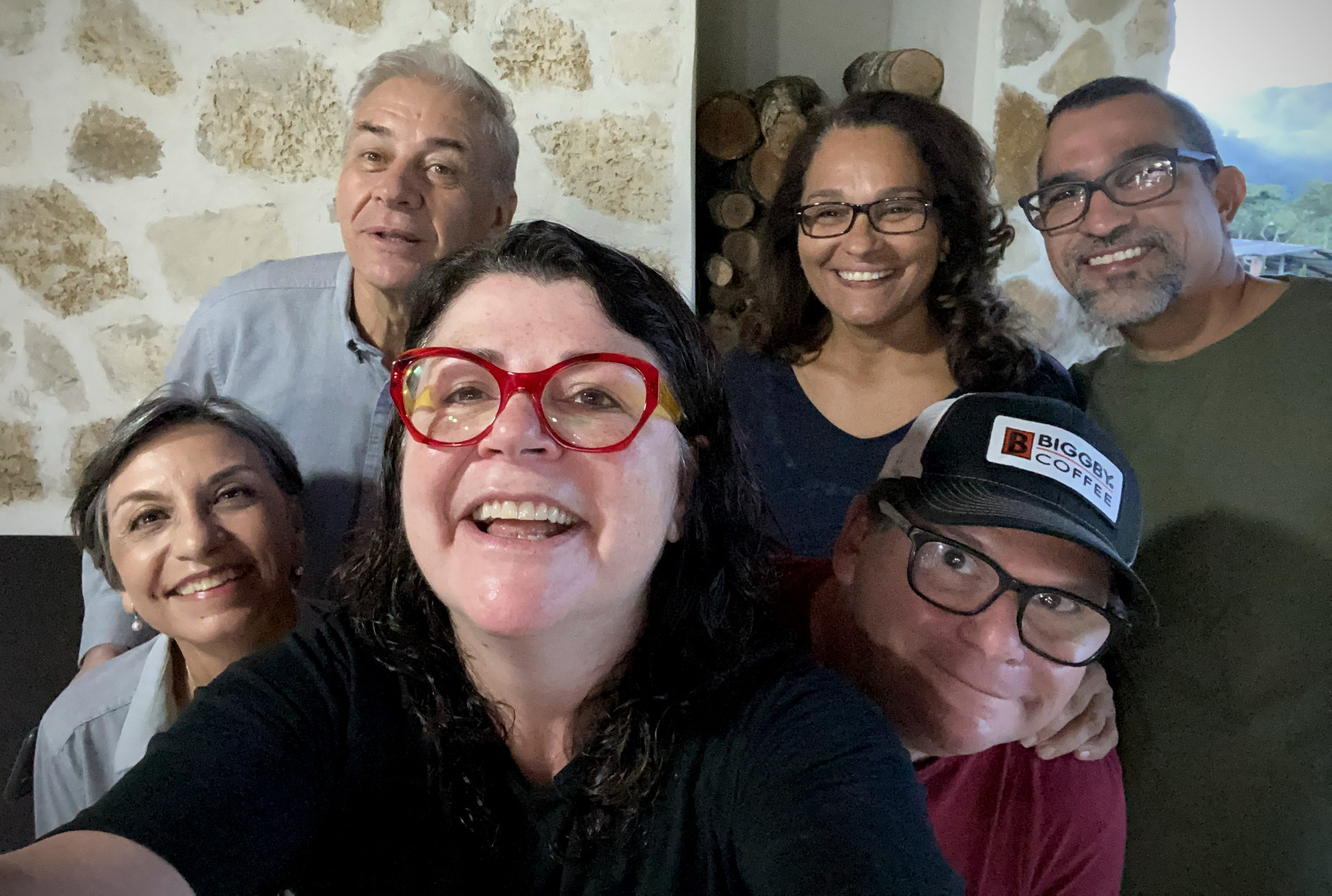
From L-R: Maria Esther Saut and Pascual Castillo, Michelle Fish, Miriam Morales, Bob Fish, and Jorge Ferrey, from our visit in October of 2021.
But that’s not where the story starts. The roots of where they are today, and why they are so committed to the path they’ve chosen, go back decades. It’s a story about people and relationships, and what it means to be steadfast in a turbulent world. It’s a story about coffee in Mexico’s second poorest state. And the opportunity and heartbreak of coffee markets for small, economically vulnerable producers. But it’s mostly a story about people who see the world differently than everyone around them, and are brave enough to take big, seemingly irrational and impossible leaps to bring a new way of doing things into existence.
Life Before La Fortaleza
In 1986, Pascual and his father went into the coffee business together in the coastal city of Veracruz, about 9 hours away from Chiapas by car. They built their first dry-mill and started scouring the coffee growing regions of Mexico to find farmers from whom to buy. Over time, they built a very successful processing and exporting business that focused primarily on volume. Their client list included (and still includes) some of the behmoths of coffee, names we would all recognize. And they shipped (and ship) millions of pounds of coffee all over the world every year.
In the family business, Pascual had two main passions. One was designing and building dry mills, and after building more than a dozen or so, I can assure you he is very good at it.
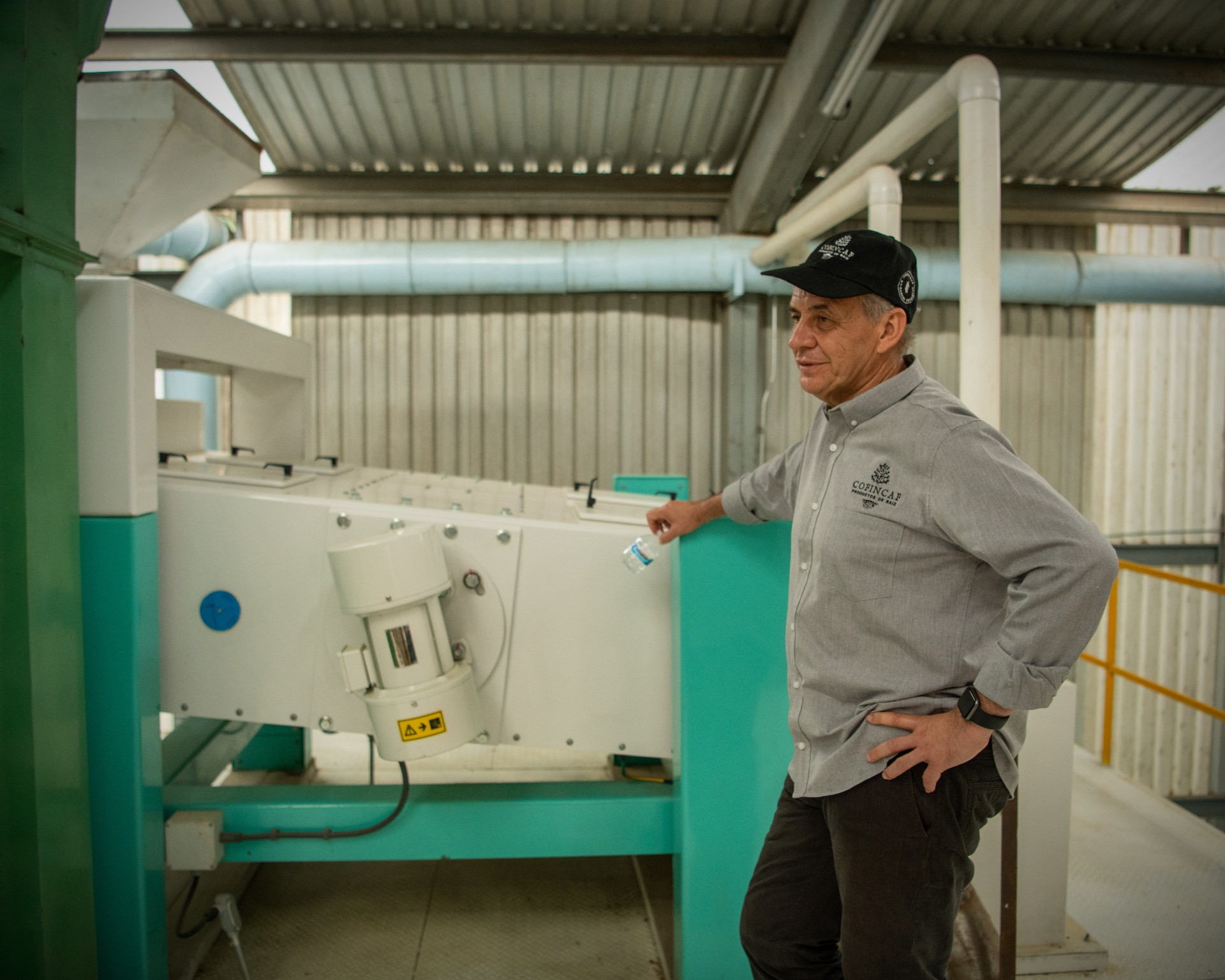
Pascual Castillo in the dry mill he built at Finca La Fortaleza.
But his biggest joy, then and now, comes from finding and working with small coffee producers. He began to spend a lot of time in Chiapas in the early days of the company. In part, because the coffee was very good there. But more than that, he was attracted to the people that grew it.
Although there are a few landowners with very large holdings producing coffee, the vast majority of the region’s crop comes from growers with two hectares (about five acres) or less. Much of this coffee is grown by people of indigenous descent, many of whom live and work their lands in remote areas far from population centers and the resources of the state.
Where the coffee grows
It’s a very tough life in these mountain villages. The primary economic opportunity is agriculture. And, like small farmers all over the world, it’s hard to make a good living growing subsistence and commodity crops. Access to education and health care is scarce to non-existent. Birth rates are high, and so are infant mortality rates.
In many of these communities, people over the age of 30 aren’t likely to speak any Spanish. Rather, they speak their indigenous language, and still celebrate their Mayan heritage through their cultural customs and their dress. Two of the most common languages spoken are Tzeltal and Ch’ol.
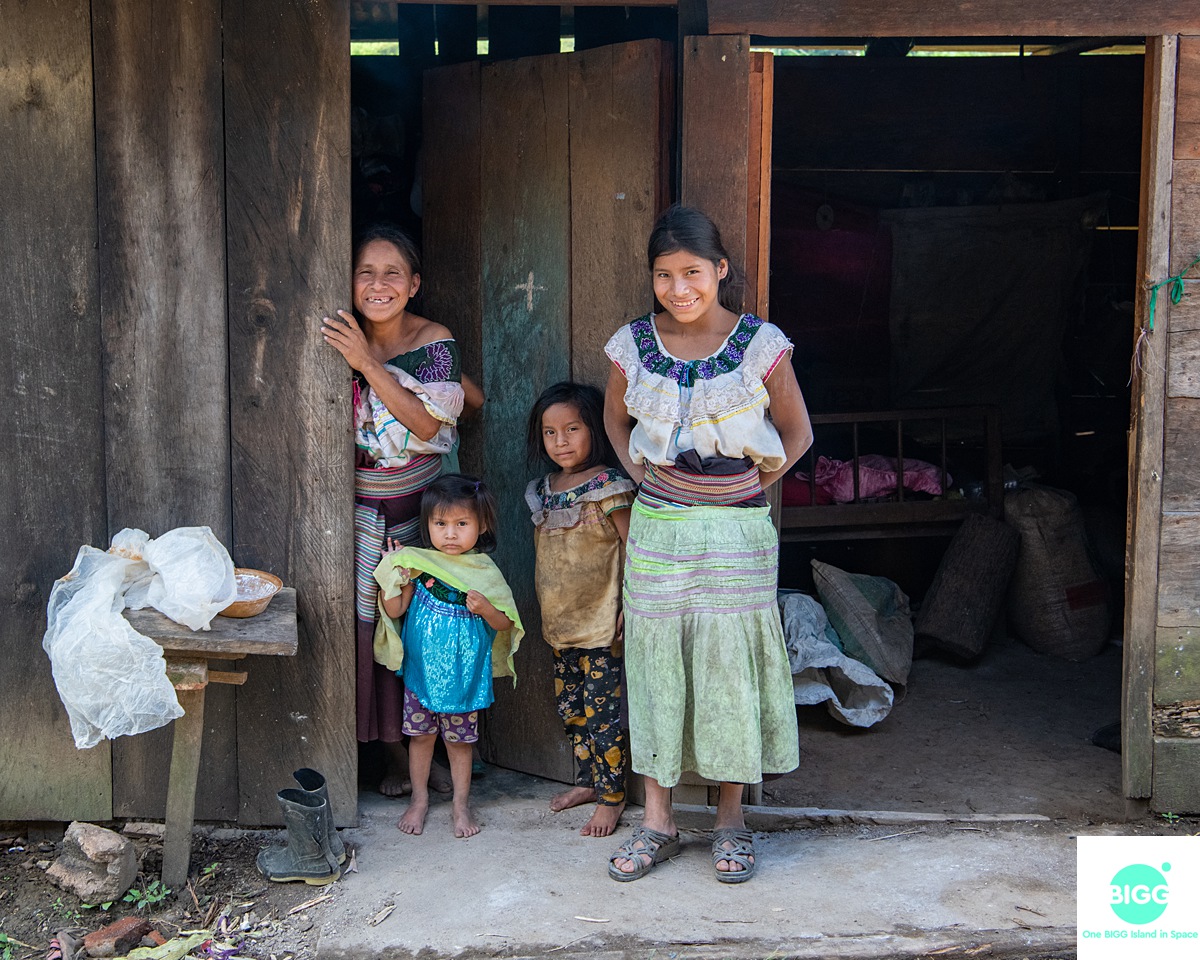
The Ramos family are among the many small producers of coffee in the rugged mountainous terrain of Chiapas.
These small coffee producers have been caught for decades between a dual set of challenges that can make it almost impossible to make a sustainable living. One is their lack of access to processing and transportation of their crop. That leaves them vulnerable to the vagaries of what we call “The Gate Keeper Model” as we discussed in our recent story on Ethiopia. They rely on a series of middle-men to get their crop to market, the vast majority of whom are interested in paying the farmer as little as possible.
The second challenge is the nature of the C-Market contract by which coffee is bought and sold. A producer never knows what price their coffee will get until it’s time to sell it. And the price is determined by factors that happen worlds away from their farm, like whether or not Brazil has had a frost, or Columbia has had a banner year of production. It happens way too often that a producer must sell their crop for less than it cost them to grow it, because they need the cash to feed their families.
Pascual’s respect for these small producers ran deep. And he formed many strong friendships over the course of his time buying coffee for the family business. He forged partnerships in these communities and became invested in working them to improve their agronomy and get them better prices for their coffee. Over the years, fulfilling the commitment that he made to these people that he so respected became more than just a job for him. It was his purpose.
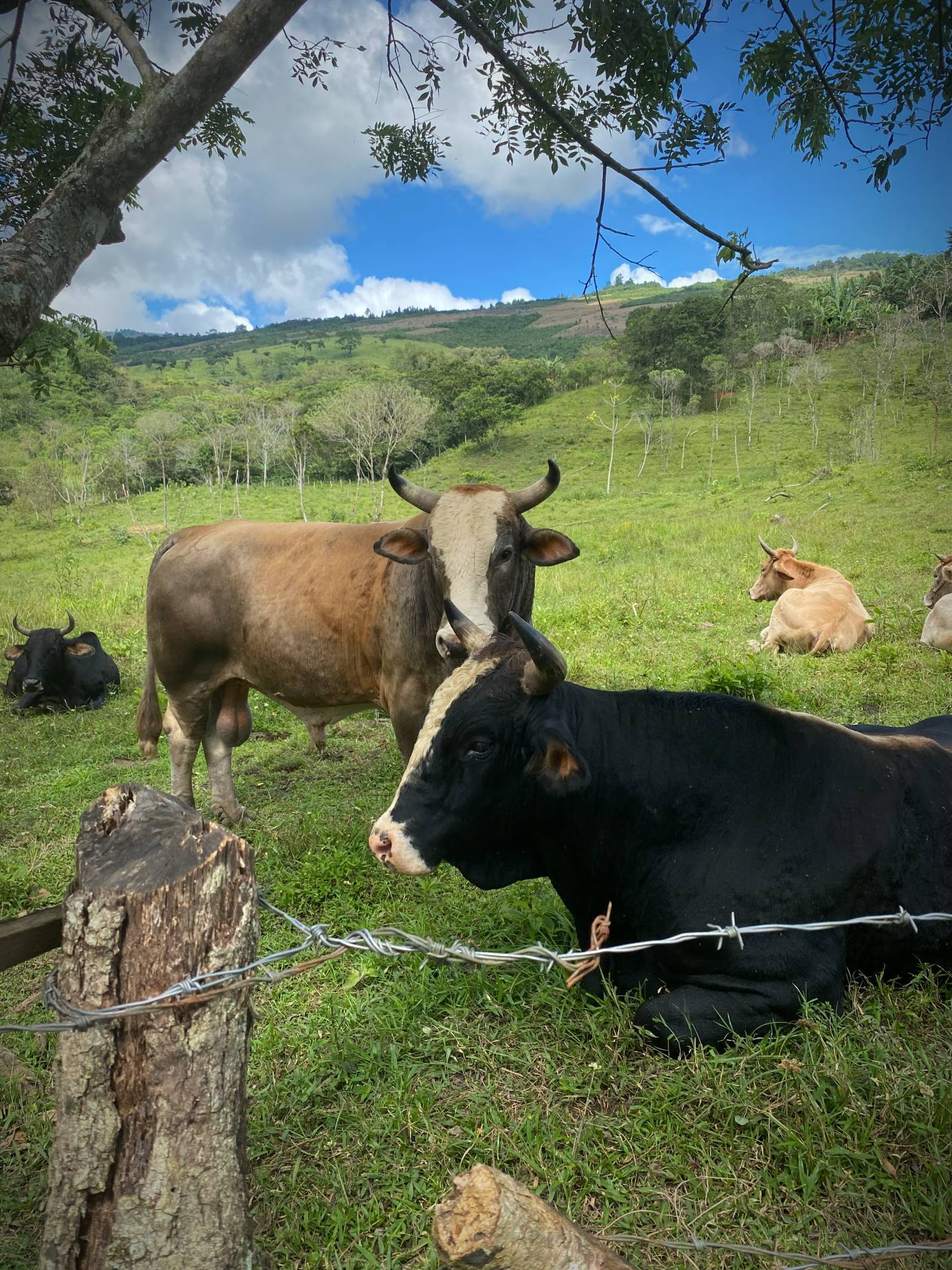
Meanwhile, back on the farm
Coffee wasn’t the only family business. Pascual’s father was also a successful cattle rancher and, in fact, owned a ranch in Chiapas, as did a dear friend of Pascual’s. In 2007, when 108 hectares (about 270 acres) became available in the Yajalon area, which translates to “Green Land,” Pascual decided to buy it.
It was a beautiful spot. Bucolic, with a river that flowed through it, and the vista of mountains all around. Once, the land had been forested. But farming cattle requires removing the trees to open the range for grass. Of course, deforesting has its own impact on the landscape, as does the trampling of hundreds and hundreds of cows. The soil compacts, and the temperature rises, changing the types of flora and fauna that can inhabit the mini environment.
The cattle farm was very financially successful. Pascual and his wife, Maria Esther, built a house to be used as their weekend retreat. And Pascual enjoyed spending more and more time there, being close to the small producers, and living in the landscape that he so loved.
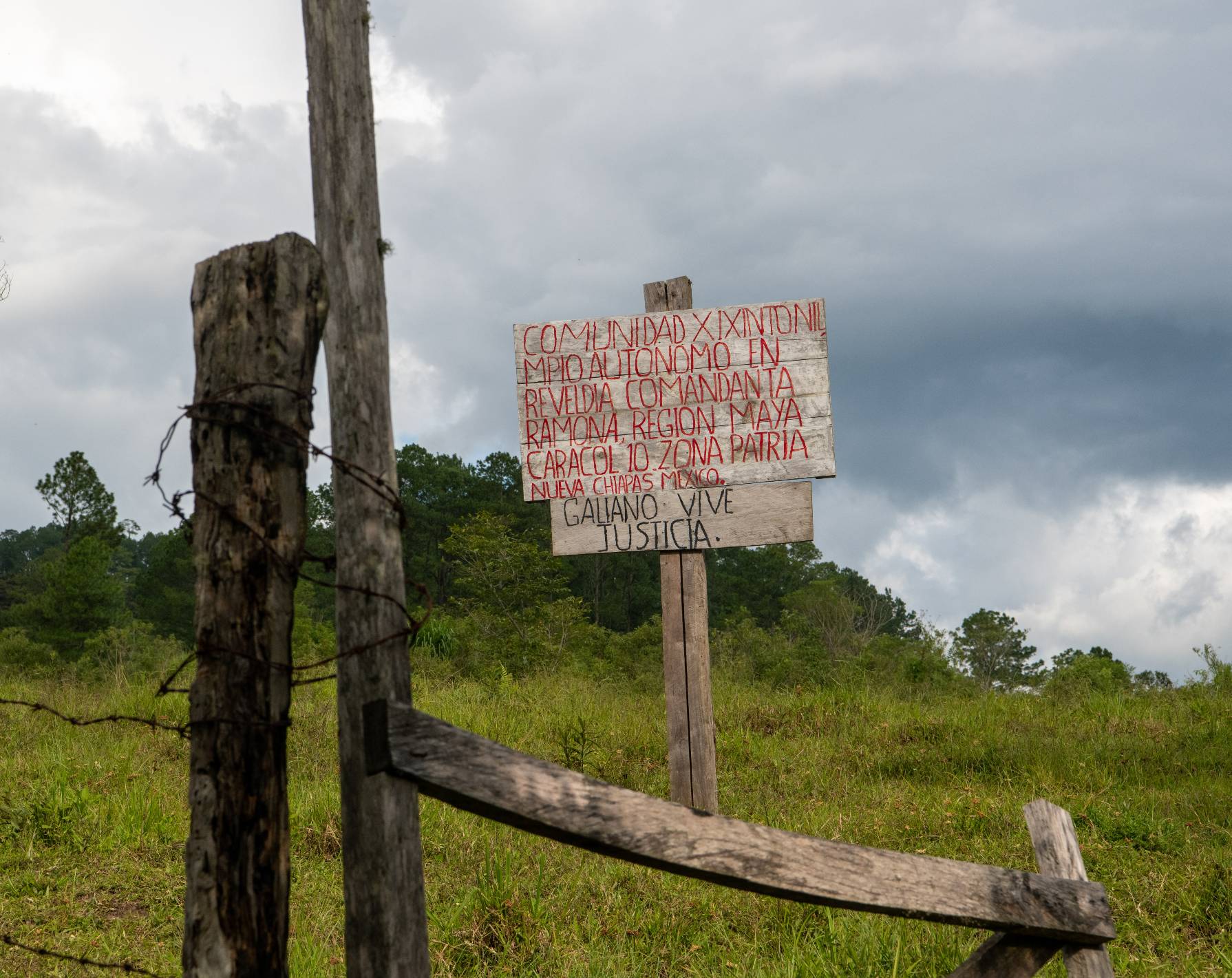
Revolution
There has always been tension between the indigenous communities in Chiapas and the larger Mexican society. Economic inequality, lack of access to basic services, and unfair and exploitive land management policies are a few of the many complaints that always simmered below the surface. Many of the small farmers did not have deeds or titles for their land. It had been handed down through generations, with no state record keeping or involvement. In 1991, the Mexican government of Carlos Salinas rescinded legal protection for small land owners without documentation. It was generally viewed as an invitation to larger land holders and corporations to seize property. And what had simmered began to boil into an outright rebellion.
While the local indigenous population began to mobilize politically and through protest, the Mexican government responded with a brutal repression campaign. In spite of the threat of government reprisals, small local groups began to arm themselves. Large landowners, fearing violence, formed paramilitary organizations to police the locals. And by 1994, out-right revolution had begun.
Meanwhile, Pascual’s family company was sending trucks in and out of Chiapas several times a week during harvest season to pick up the coffee cherries from his partners.
As the violence began to escalate, most of the other big coffee companies pulled out. Even Pascual’s company drivers refused to go in. The risk of violence was just too high. But that was devastating for the small producers, Pascual’s partners, whose families depended on getting their crop to market.
So, over the very strong objections of his family and his friends, Pascual went himself, several times a week, all through harvest season. When I asked him why he would take that personal risk, he told me that the small producers were counting on him. If he didn’t go, no one else would. And besides, he said, they knew him, and he felt that he would be protected from being shot or kidnapped because the people in these communities knew he had always done right by the farmers.
It was very dramatic foreshadowing for what was to come.
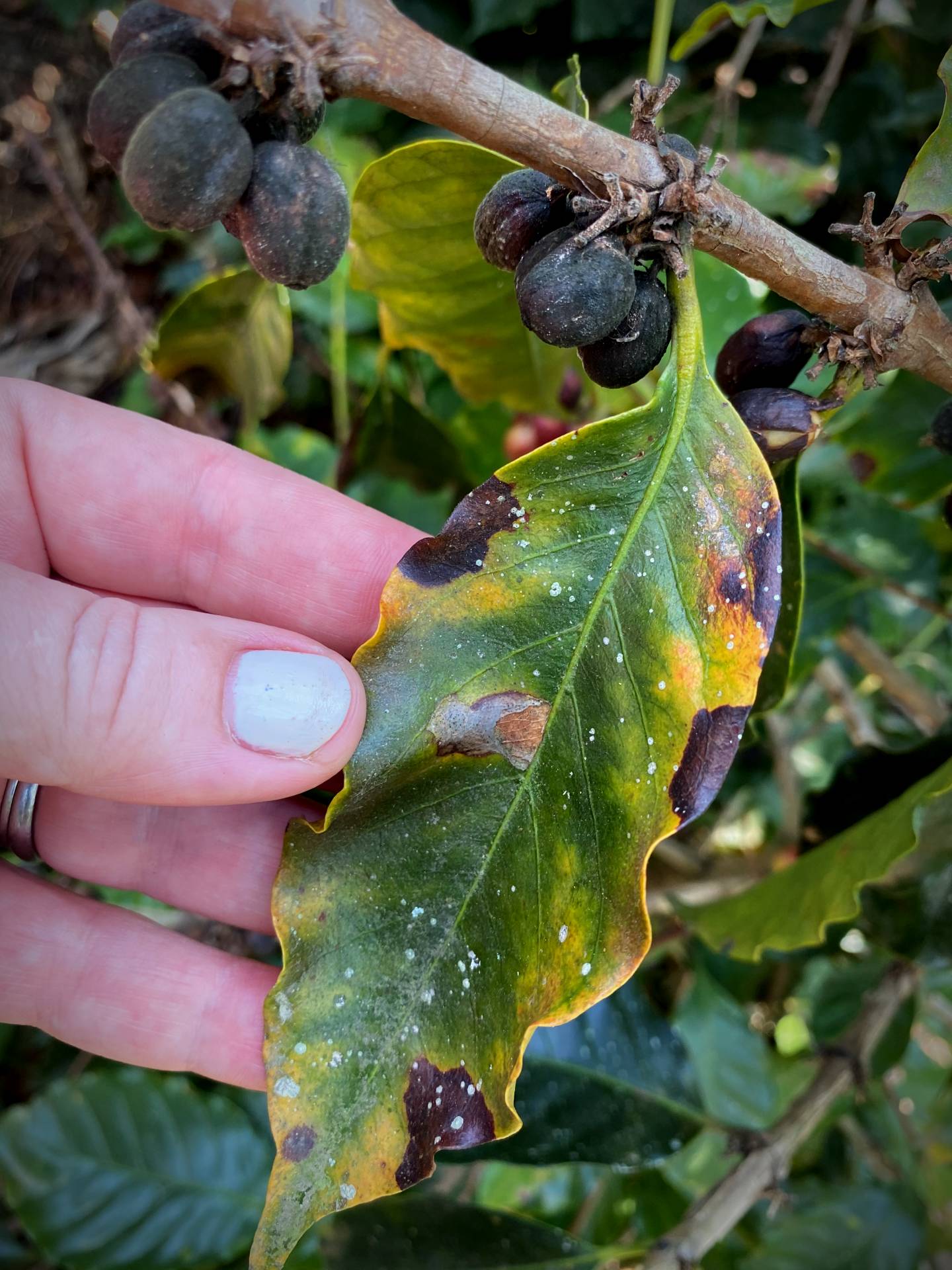
Roja
Roja, otherwise known as rust, is a fungus that attacks the leaves of a coffee plant. Left untreated, it can defoliate the plant, thus killing it, because it can no longer photosynthesize. It spreads easily by wind, rain and touch. The wetter the conditions, the easier the spread. While there are treatments, rust resistant varieties of coffee, and agronomic techniques that can help reduce the incidence and the spread of the disease, the agriculture in Chiapas was based on traditional varieties and approaches that had been used by the producers for decades. They just weren’t ready for the impact of climate change.
Rust had been becoming more prevalent in the region from 2011 on, with many producers losing a significant percentage of the crop to the disease. In 2014, it all came to a head. Coffee production went to zero in Chiapas. Zero.
As a result, all of the multi-national corporations, like Nestle and Starbucks, pulled out. After all, there wasn’t any coffee to buy, so why stay? Never mind what happens to those you leave behind.
Tens of thousands of small producers were devastated. All of Pascual’s friends and partners in the region lost their ability to feed their families with coffee and had to make brutal and difficult decisions to stay alive.
Pascual and his wife, Maria Esther, had their own big decision to make.
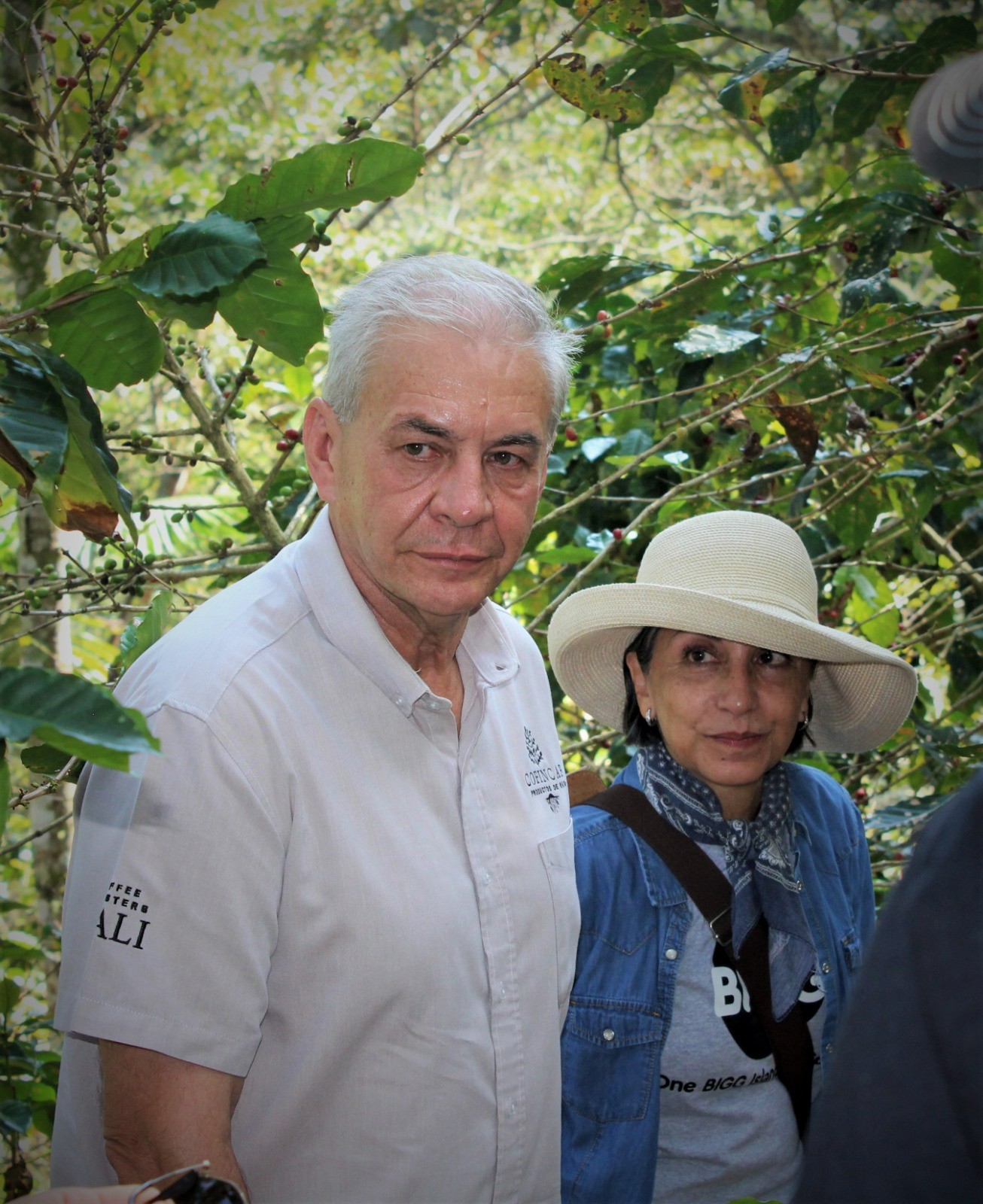
The Birth of Finca La Fortaleza
Sometimes, doing the thing that seems the most obvious and right to you can make your friends and family think you’ve gone crazy. Pascual and Maria Esther had a very good life in coffee, and a successful cattle farm in Chiapas. They had been in the business for more than two decades and had achieved great success. Generally, this is the time that others would slow down and begin to enjoy the fruits of their labors.
But, in the face of what happened in Chiapas in 2014, they decided that they could make a difference, so they doubled down. The immediate need was for the small farmers to have a way to feed themselves. So, they sold their cattle, and hired a small army of their partners from over the decades to help them convert their cattle farm to a coffee farm.
By the way, that, in and of itself, is something that is likely to get you called crazy. Once land has been deforested and trampled on by cows, it’s very difficult to use it for anything else. The labor required to turn it back into agricultural land is enormous, and daunting. Some might say it’s impossible. And that’s before you replant the shade trees that coffee needs to reach its peak sweetness.
But they began the journey.
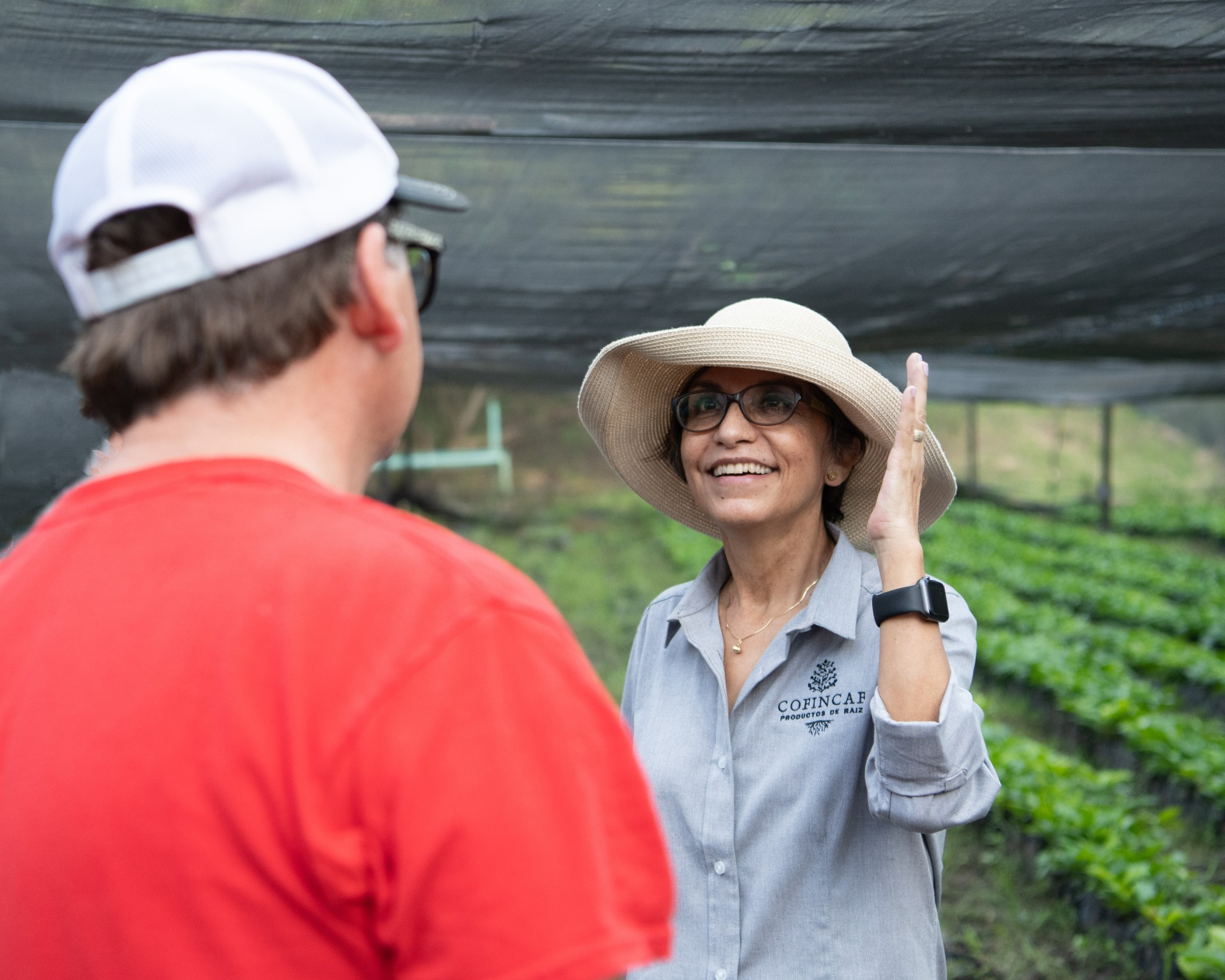
Maria Esther showing Bob the seedling beds in 2021.
At the same time, they consulted the most talented researchers on coffee for information on the best rust resistant varieties. They started a nursery for hundreds of thousands of those plants that they intended to give for free to the small producers.
The first crop of seedlings failed, so they did it again. Over time they grew and gave away more than 2,000,000 rust resistant plants over the course of just a few years.
They hired agronomists to help work with their small producers to teach them new techniques as they planted the Fortaleza-grown seedlings. For many, it was about showing them how they could use the beans and corn they had planted when the roja wiped them out as the first form of shade for the new coffee seedlings. That way, they could still grow a crop to eat or sell while they transitioned back to coffee.
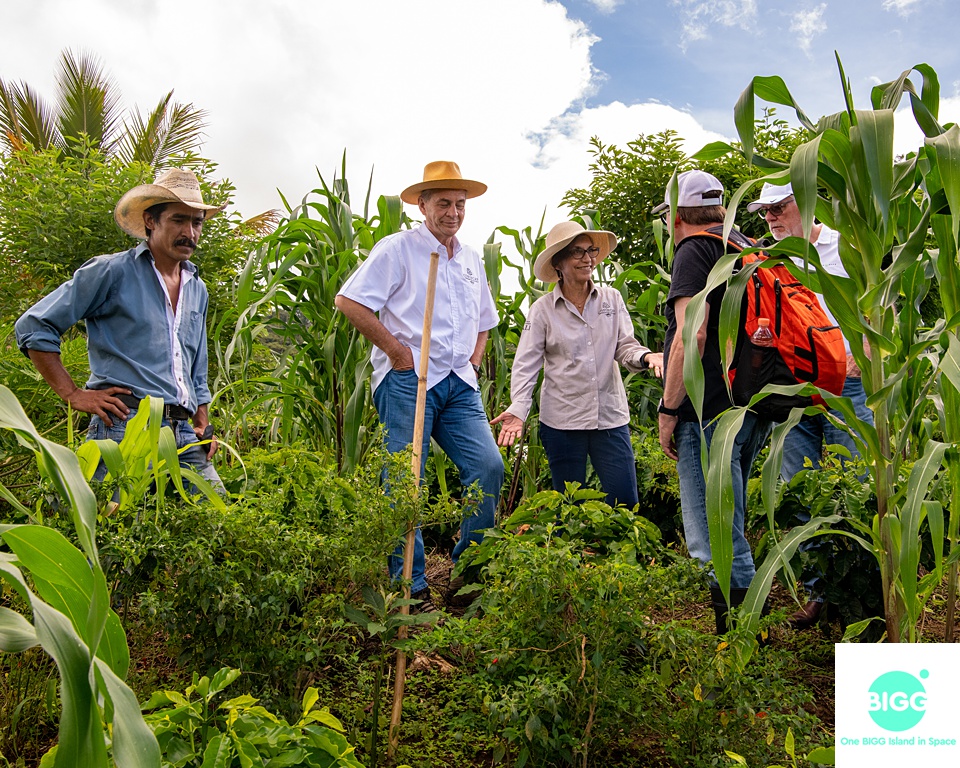
They taught the producers that were working on their farm transition how to best prepare the land for new coffee. And then, they empowered and paid them to teach their neighbors.
It took time, but by 2017, Fortaleza’s transformation back into a coffee farm had been largely completed. And the landscape changed completely. Both the landscape of the farm itself, and the opportunities for coffee among the small producers in Chiapas.
Remaking coffee
When you walk the fields at Finca La Fortaleza now, it’s hard to imagine that they were ever anything but a beautiful, healthy, productive coffee farm. The shade trees are all grown up. The temperature is cool in the shade. The river is clean and flows vigorously through the land. The sound of birds at all hours of the day is your constant accompaniment to the beautiful, verdant landscape.
From a climate change perspective, they have done some mighty heavy lifting. More trees, protected water sources, and less cows are a part of what the world needs to slow down the mighty engine of global warming. And you can feel the power of that approach on their land. Migrant birds that haven’t been seen there in decades are everywhere. And small mammals, snakes and fish have returned.
But their impact goes far beyond their own land.
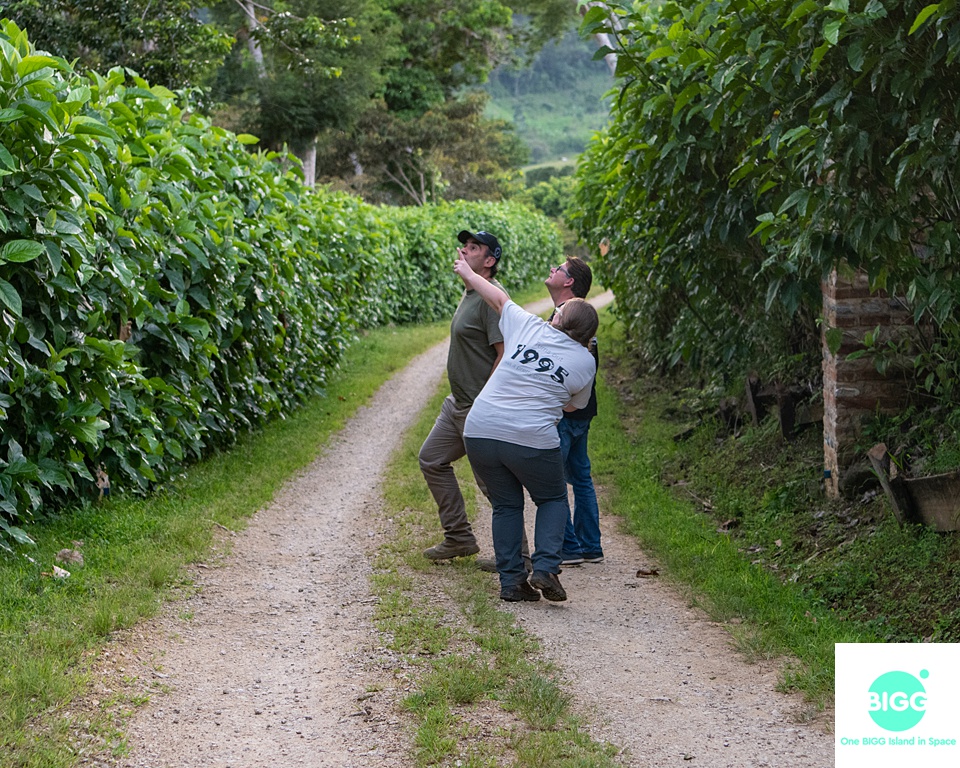
Bird spotting at Finca La Fortaleza
Coffee is a viable crop in the region again. They work with around 2,000 small producers, some directly, some through their original partners, providing technical assistance, training, and access to rust resistant plants. Their aim is to help the small producers improve their quality and their yields, so that their coffee can fetch a higher price on the market.
Maria Esther heads up the work they do on the social side. They brought in mobile clinics to screen for breast cancer and other diseases, and they have big dreams to start a clinic. They have helped small landowners get their documents registered so that they can have clear title to their land. Also, so that they can get state IDs, and register their businesses. While that means they may have to pay taxes now, it also means that they are no longer solely reliant on the Cayote system to sell their coffee on the “black market,” and they have access to state economic support.
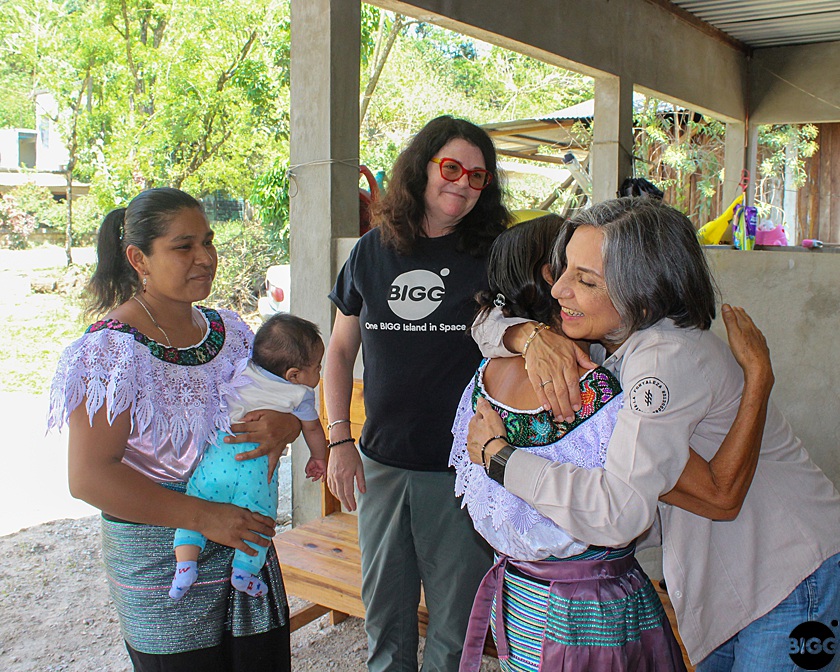
Juana Hernandez, her daughter Elvia, and her grand daughter, greet Maria Esther during our visit to their family farm in March of 2023. Through our Farm-Direct partnership, their coffee is now included in the BIGGBY BEST blend.
In 2018, they built a state-of-the-art Dry Mill on the farm. By that time, they had left the family business in Veracruz and established COFINCAF as an aggregator and processor, preparing the coffee of the small producers for export. Pascual has decades of experience in finding markets and the best prices for the producers they work with.
Their son, Pascual Jr. and his friend Juan Carlos have started a roastery and a chain of coffee shops in Monterrey, Mexico called Kali Coffee, that sells the coffee from La Fortaleza both in their coffee shops and in grocery stores in Mexico and the United States. They also coordinate the shipment of containers to BIGGBY COFFEE through Paramount Coffee Roasters.

From L-R, Michelle Fish, Pascual, Juan Carlos, Pascual Castillo Jr., Bob Fish and Rich Schaasfma of Paramount Coffee raising a cup to celebrate Kali Coffee’s success in Monterrey, Mexico.
Our Partnership
In January of 2023, we officially began buying 200,000 pounds of coffee from COFINCAF. 60% of it comes from Finca La Fortaleza, and 40% from four small producers that they work with.
I look forward to telling you more about Don Pascual Hernandez, Miguel Angel Cruz, Soloman Demeza, and Martha Vazquez, their families, their farms, and their dreams. These are the small producers whose coffee is now in the BIGGBY BEST blend. It has truly been an honor to meet them and walk their fields. And we can’t wait to see what the impact of our partnership with them will be as the future unfolds.
Without the tireless work that Pascual and Maria Esther do, it is extremely unlikely that OBIIS would ever have been able to find these four producers, or anyone like them. They would have been too small, and from places too off the grid, to reach our radar. But small growers like them make up the vast majority of coffee production in the world. And their farms are often the most economically vulnerable. Working with them gives OBIIS, and BIGGBY COFFEE, the opportunity to have tremendous impact. All while securing great coffee from people doing the heavy lifting of improving their communities.
Pascual and Maria Esther are an inspiration to us. And their friendship and their partnership mean the world.


